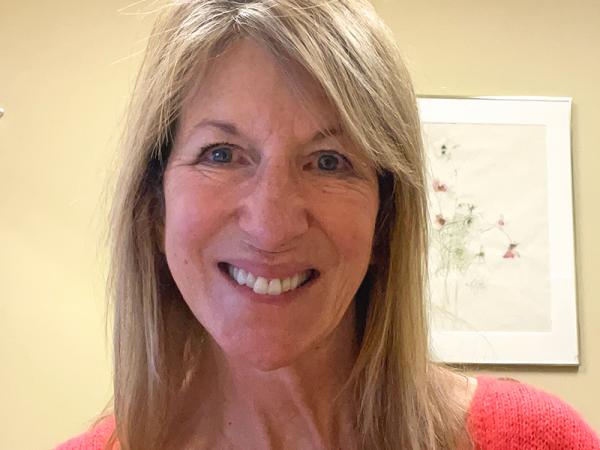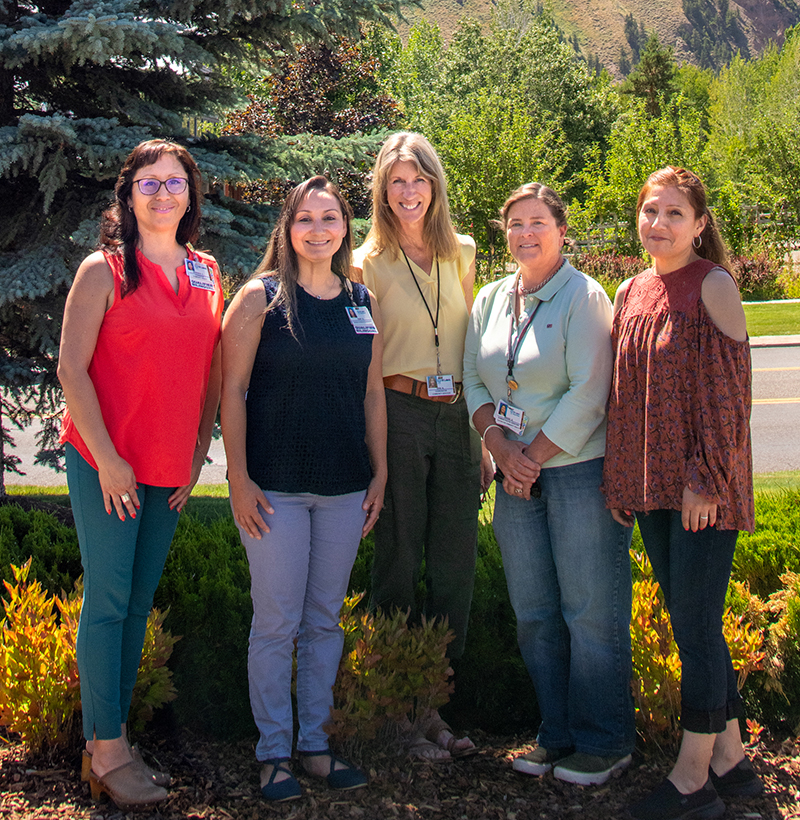SVMoA Blog
Erin Buell: Creative Solutions for Healthcare Challenges
Courtney Gilbert (Curator)

SVMoA’s current exhibition, Bodies of Work: Art & Healing, explores ways that artists have used their practices to navigate the experience of illness. This is the final week of the exhibition, which will close on Saturday, March 23.
Because of the exhibition’s focus on healing, for this week’s SVMoA Voices, SVMoA and Bodies of Work curator Courtney Gilbert sat down with Erin Buell, Community Outreach Coordinator at St. Luke’s Center for Community Health, to talk about the work she and her colleagues do to come up with creative solutions for people in our community facing healthcare challenges.
Tell me a little bit about the Center for Community Health (CCH).
The CCH is a department of St. Luke’s Wood River, and it was established about 30 years ago — it was kind of a pioneer in the field of community health at the time. I’ve been here for nearly 20 years, and it is constantly evolving and improving. We work to connect the dots of a person’s health so that one is able to understand their diagnosis and have support to follow instructions regarding their health and medications once they leave the clinic or the hospital. This way, individuals in our community are better able to get — and stay — healthy.
We are a non-clinical department, and our services are free. Sometimes, we help people facing financial challenges, and sometimes, we help with mental or physical health situations. Health can mean many things, and there are many things that we can do to try to help.
A lot of what we do takes time, so we try to hold our clients’ hands through the process. For example, applications and paperwork can be overwhelming, particularly for people facing a medical or other crisis, but that form or application may be important to receive assistance. So, we meet people where they are and help them get through the process.
We also provide community education, such as English and Spanish-language childbirth and parenting classes. Over the years, more organizations have come to our community, so we work hard to understand the work and the programs and classes that other local nonprofits and agencies are doing so that we can support and refer to them.
Six times a year, we organize an interagency meeting that’s open to any organization. Currently, more than 70 organizations are invited to participate. To mention a few who often attend are the Hunger Coalition, The Advocates, local libraries, Mountain Rides, the Idaho Department of Health & Welfare, the Salvation Army, Hospice, the Senior Connection, YMCA, Blaine County Housing Authority, Blaine County Charitable Fund, and the social workers in the school district. Everyone shares a bit about what they’re doing, what they’re seeing in the community, and what they have coming up on their calendars. It’s kind of amazing how many resources there are in the valley.
St. Luke's Center for Community Health Team
How many people work in the CCH?
Right now, we have three outreach coordinators, including myself, an administrative staff member, and our manager. Two of my colleagues are Spanish-speaking, which is really beneficial.
How do clients find you?
We used to be in offices that were separate from the clinic. I think that because they didn’t see us, it was easy for clinical staff to forget we were a resource. Now that our offices are in the St. Luke’s Clinic, doctors often send patients directly to us. And we get referrals from other community organizations, such as those who attend the interagency meetings.
What is a typical day like for you?
We usually have about 60 contacts a day between the three outreach coordinators. Those can take anywhere from 5 minutes to 45 minutes or longer. We’ve been busy and are getting busier. Demand is growing. A typical encounter starts by evaluating where people are in terms of the social determinants of health, food, clothing, housing, and access to care. Once we determine what services a client needs, we’ll start making a plan. Sometimes, we connect patients to funding sources — some with applications, some without. We try to problem solve and make the process as easy and sustainable as possible for people. For example, we might be able to cover the cost of someone’s prescriptions, but if it’s a medication they’ll need for a long time, we help find a long-term solution.
Our goal is to help people access health and stay as healthy as possible. I’m really proud of our team. There’s so much compassion. We try to break down barriers to access from the beginning and create a safe space. For people in crisis, the world can feel like a snow globe. There are lots of snowflakes flying around and making it hard to see — it’s messy. We help people grab onto one flake of snow to get started while letting everything else settle for a while.
Do you have any thoughts about the relationship between health and creativity?
I believe the arts are very much intertwined with our health, particularly our mental health and sense of well-being. They are completely connected.
